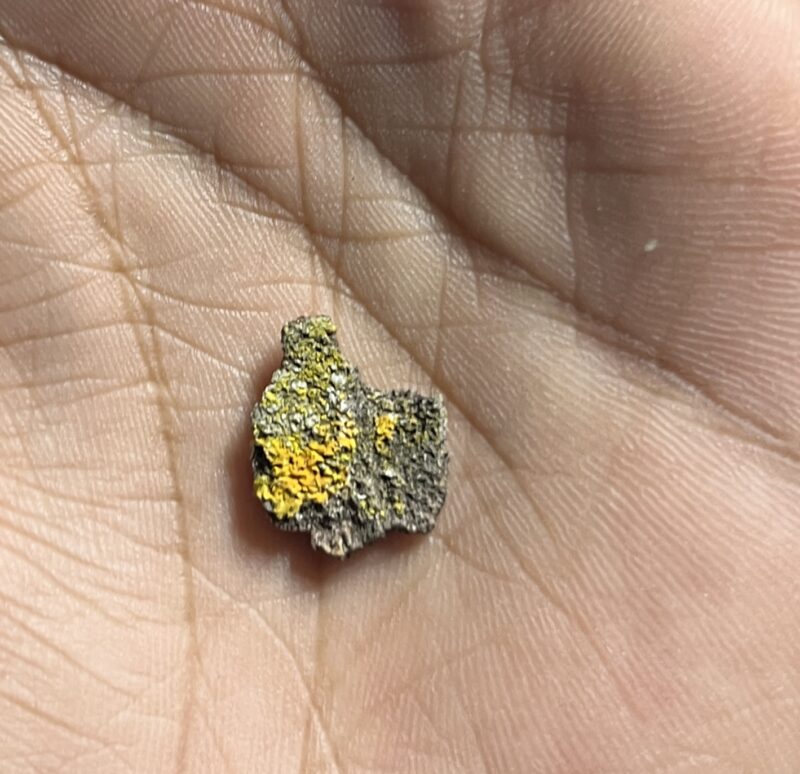PART ONE: INTRODUCTION TO THE SITE (10 pts.)
In the bustling heart of Columbus, Ohio, the Olentangy Trail serves as a vibrant source of biodiversity. The trail passes beside the Olentangy River, creating a diverse ecological niche that houses a fascinating assortment of flora and fauna. The full provides a pleasant shade, from the bright summer sun and the sun-lit streams of golden light through the trees making the shrubbery seem to glow The air is rich with the rustle of cottonwood seeds fluttering about, creating an almost ethereal ambiance, but also quite the mess. Along with the assortment of plants, I had many encounters with wildlife, such as a water snake, a deer, and a stray cat. The serenity of the trail was occasionally punctuated by the rippling river, instilling the scene with a sense of dynamism.
Poison Ivy (Toxicodendron radicans).
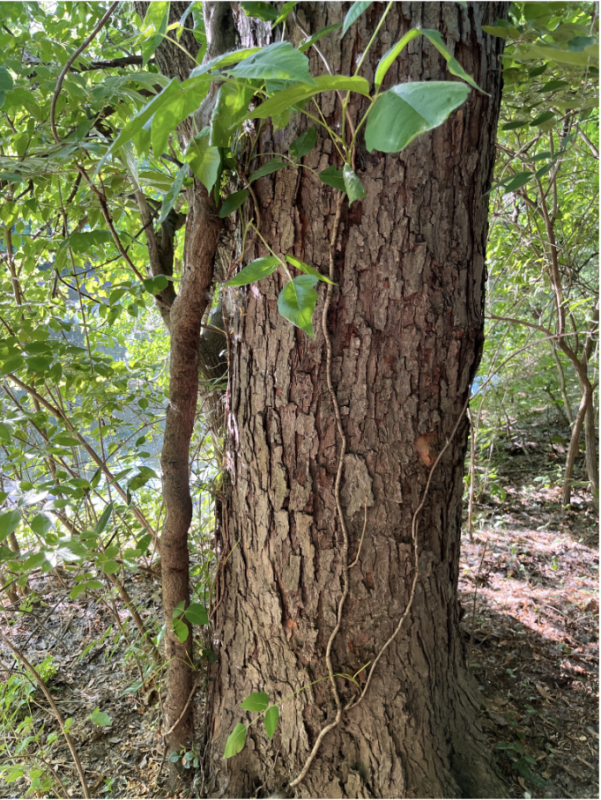
I found this nestled among the more benign plants while journeying off-trail. it’s an inconspicuous plant that can cause uncomfortable rashes upon contact. The plant is characterized by its clusters of three leaflets, which can vary in color from green to a striking red depending on the season. The leaflets often have a slight gloss, and the edges can be either smooth or somewhat toothed. It’s important to avoid contact with poison ivy due to the urushiol oil it contains, which most people are allergic to. I really wanted to touch it but resisted the urge. Despite its reputation, poison ivy plays an important role in local ecosystems, providing food and shelter for several bird and insect species.
Here is the Section Of Olatangy Trail I explored
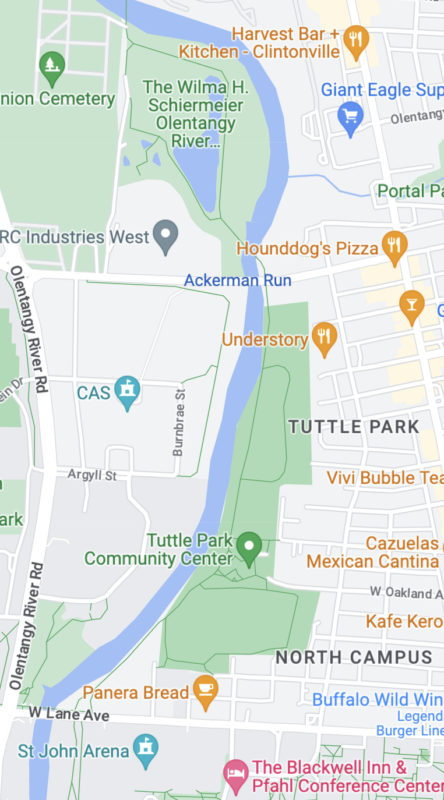
PART TWO: FLOWERS and INFLORESCENCES
Annual Honesty (Lunaria annua): This biennial plant was spotted in a sunny patch near the trail’s edge. Its radiant purple flowers exhibit bilateral symmetry, and the gynoecium is syncarpous. The plant has a racemose inflorescence, and it produces flat, disc-shaped fruits that are translucent when mature.
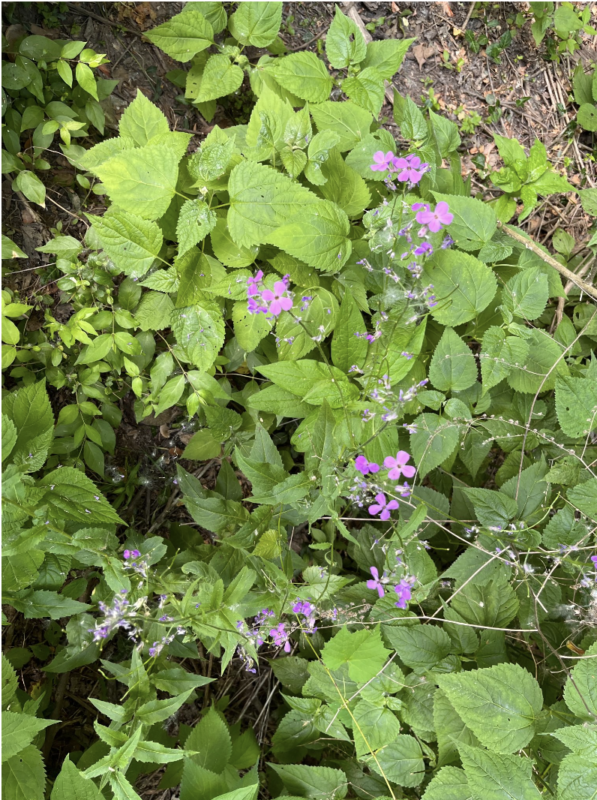
Ragwort (Jacobaea vulgaris): Ragwort was found thriving in a damp area. The flowers have radial symmetry and a syncarpous gynoecium. They form a capitulum inflorescence, resembling a single flower. The plant will produce achene-type fruits.
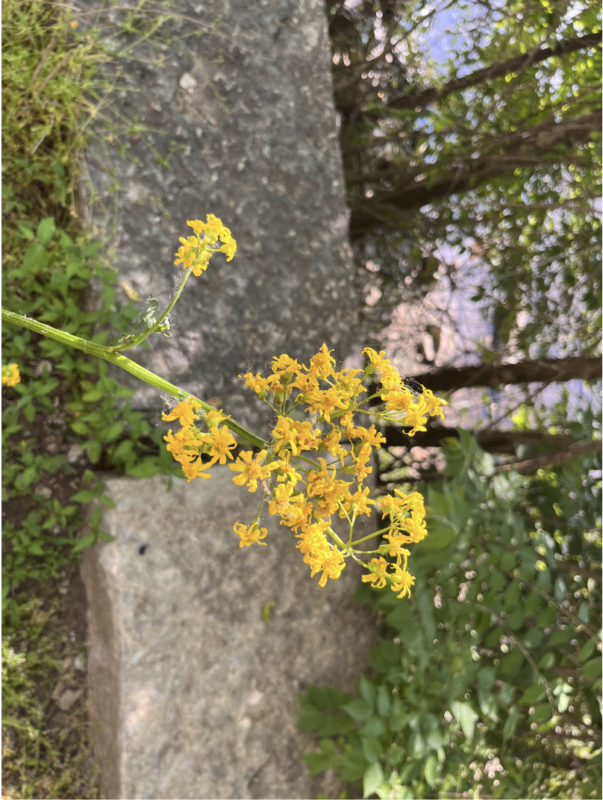
Yellow-Flowered Strawberry (Fragaria virginiana): I noticed this plant near a rocky outcrop. Its small yellow flowers display radial symmetry and a syncarpous gynoecium. The plant forms a cyme inflorescence and will produce an aggregate of achenes fruit.
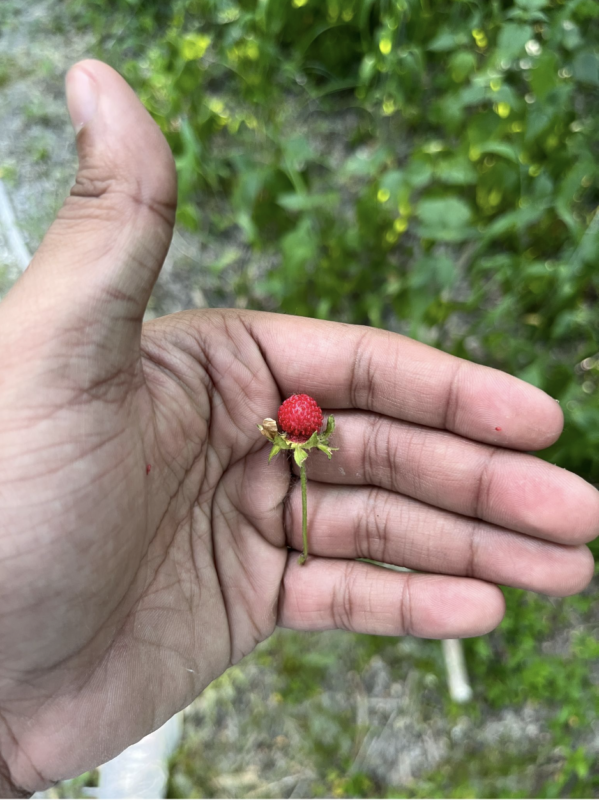
Hogweed (Heracleum sphondylium): I found hogweed growing tall in a shady grove. Its tiny white flowers have radial symmetry and are syncarpous. They form a compound umbel inflorescence, and the plant produces schizocarp-type fruits.
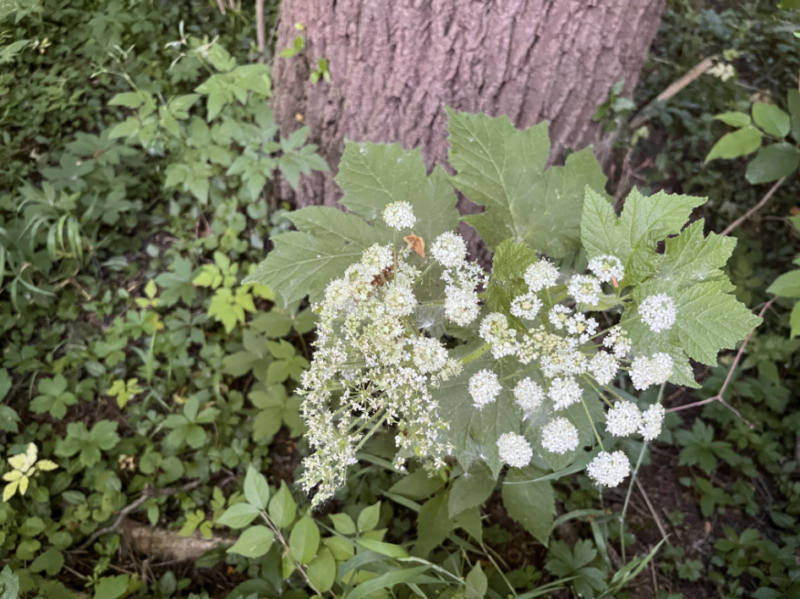
PART THREE: INVASIVE PLANTS
Multiflora Rosa (Rosa multiflora): This plant, native to eastern Asia, was found near the riverbank. It outcompetes native species for resources and can form impenetrable thickets. Control measures can include mechanical removal and herbicide application.
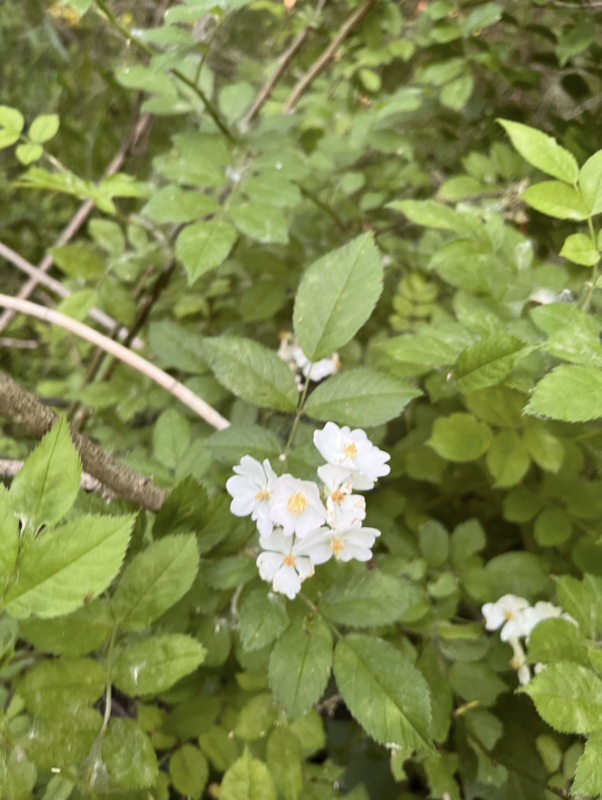
Amur Honeysuckle (Lonicera maackii): Native to eastern Asia, this shrub was seen encroaching on the woodland edge. It dominates undergrowth and can alter ecosystems significantly. Cutting and applying herbicide to the stump is an effective control measure.
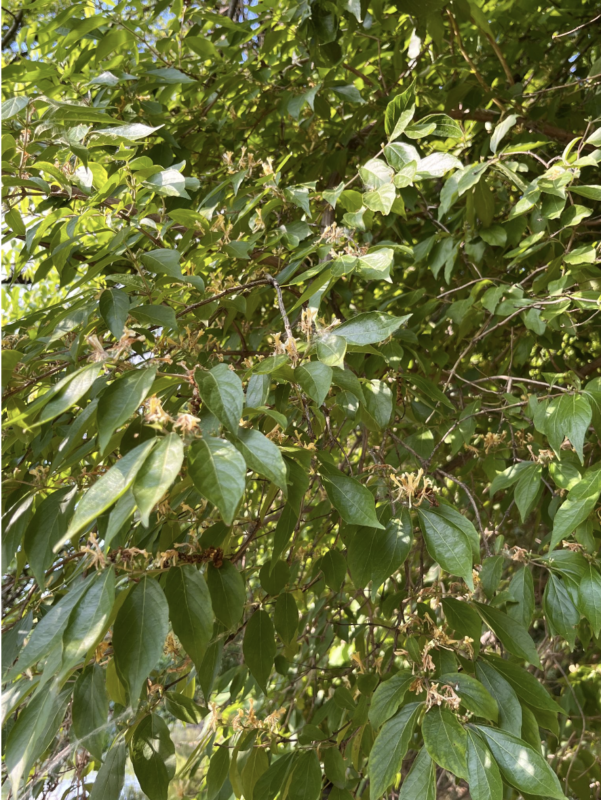
Tree of Heaven (Ailanthus altissima): This tree, originating from China, was found near the trail entrance. It outcompetes native vegetation and produces toxins that prevent other plants from growing. Control methods include cutting and stump application of herbicide.
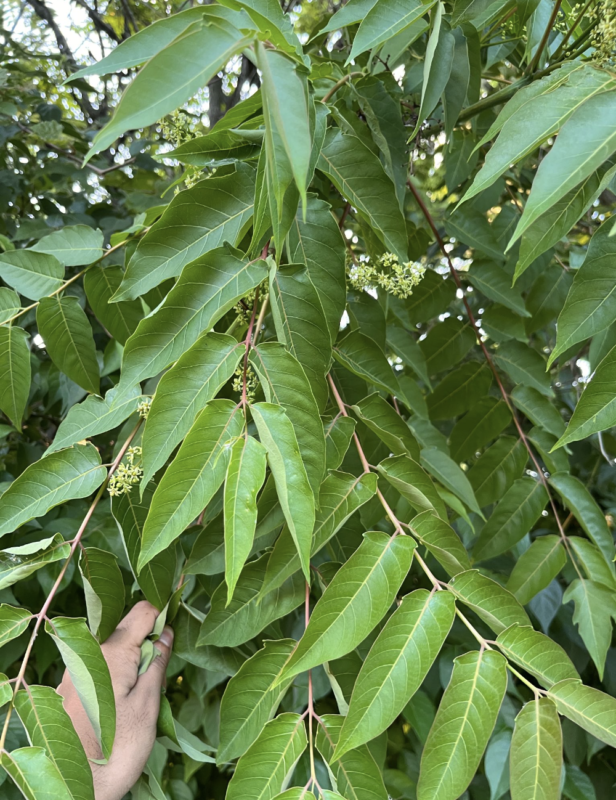
Garlic Mustard (Alliaria petiolata): This plant, native to Europe, was found all along the trail. It invades the understory and threatens biodiversity. Pulling the plant before it sets seed is an effective control measure.
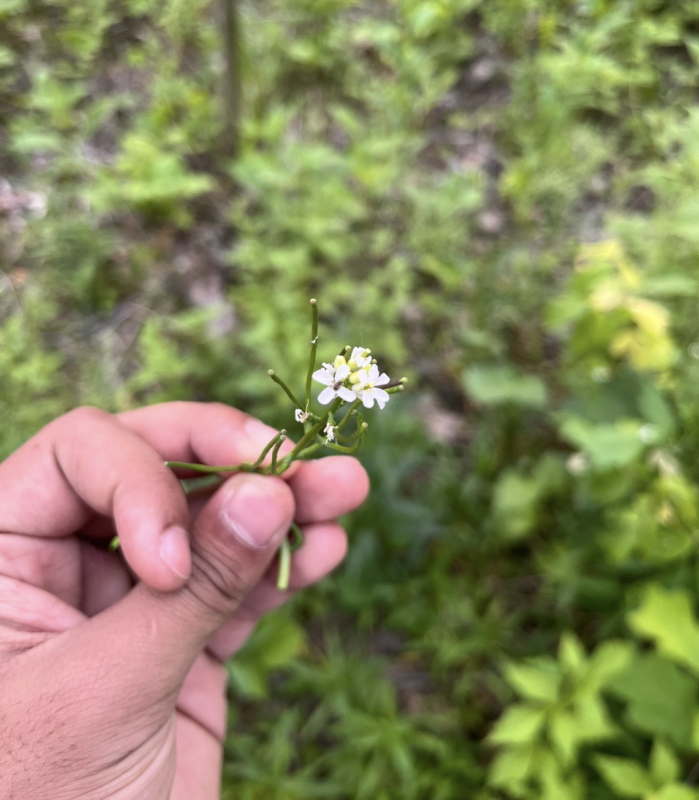
PART FOUR: WOODY PLANT FRUITS IDENTIFICATION
Red Mulberry (Morus rubra): I spotted a mulberry tree with nearly ripe, aggregate fruits. The fruits are a key identifier for this species.
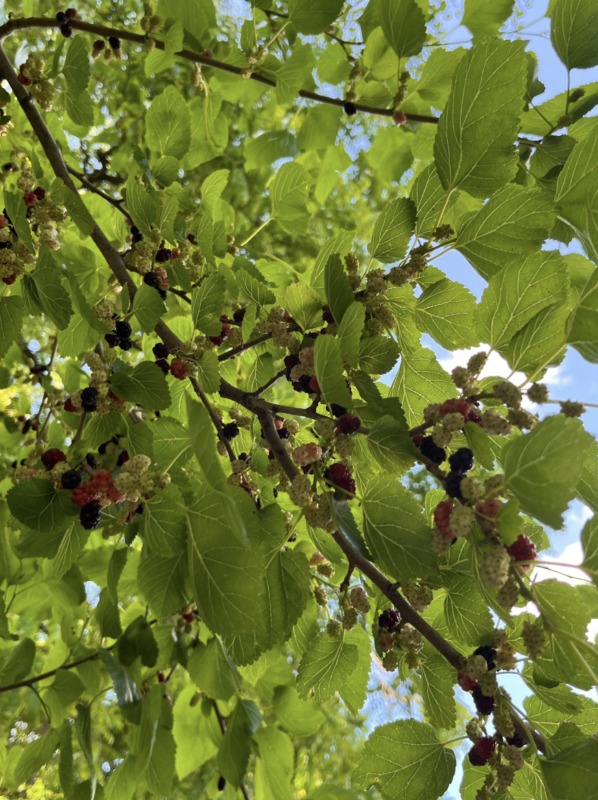
Common Hackberry (Celtis occidentalis): The hackberry was identified by its small, round, and hard drupe fruits.
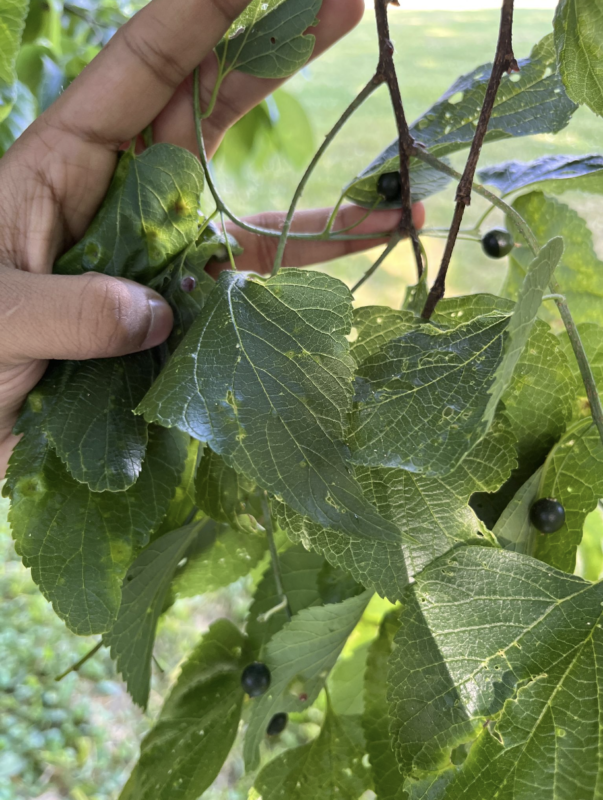
Black Walnut (Juglans nigra): This tree was easily identified by its large, round, hard-shelled drupe fruits.
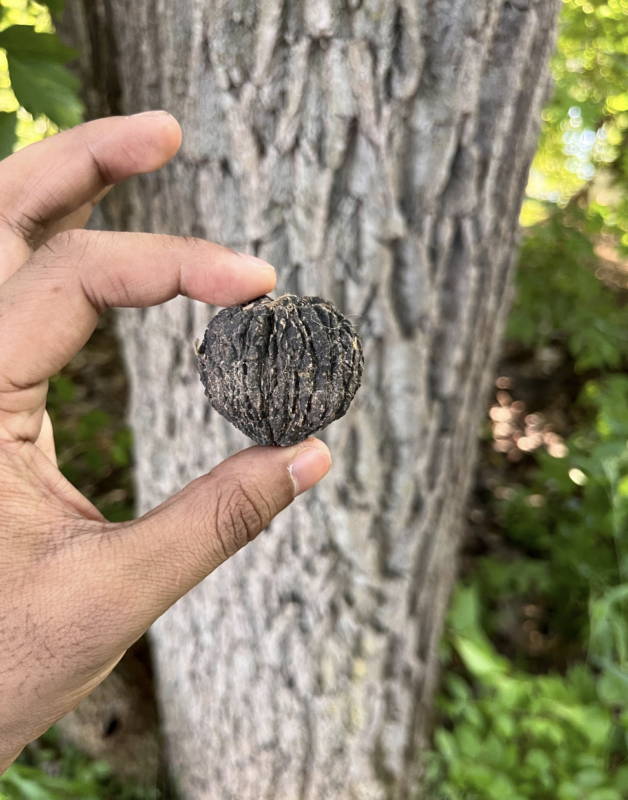
Boxelder Maple (Acer negundo): I found this near the trail entrance, identifiable by its distinctive pairs of samara fruits.
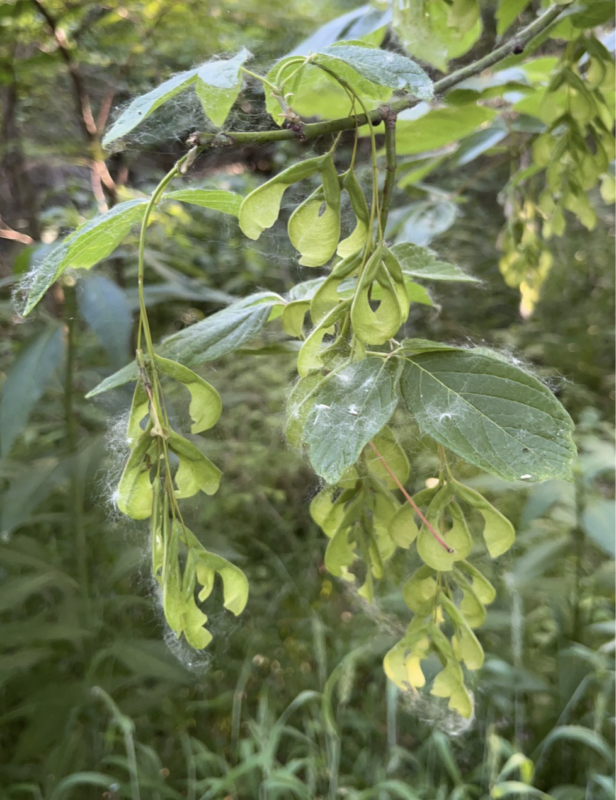
PART FIVE: MOSSES and/or LICHENS!
Fontinalis Moss (Fontinalis antipyretica): Found growing on a moist rock by the river, this moss displays an irregular branching pattern and feathery leaves.
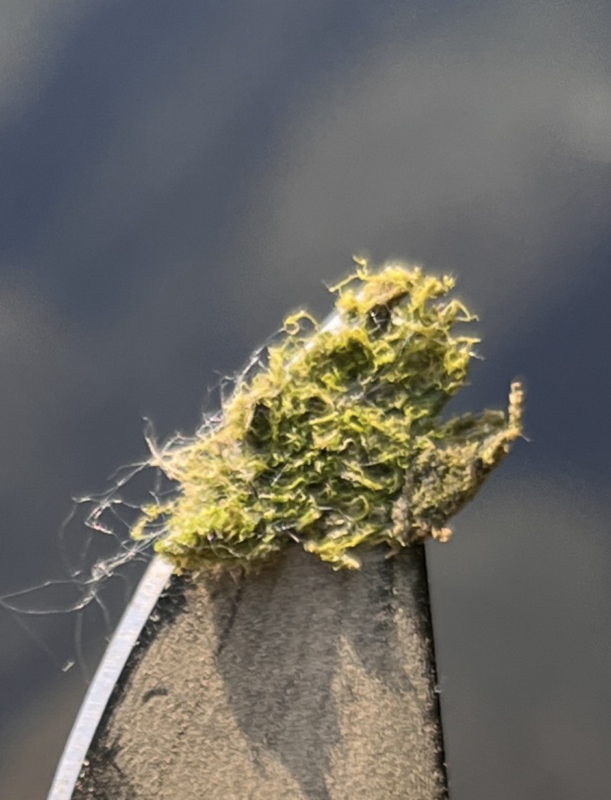
Silver-thread moss(Bryum argenteum): This moss was found on the soil of a shady area. It has a dense, silvery-green appearance.
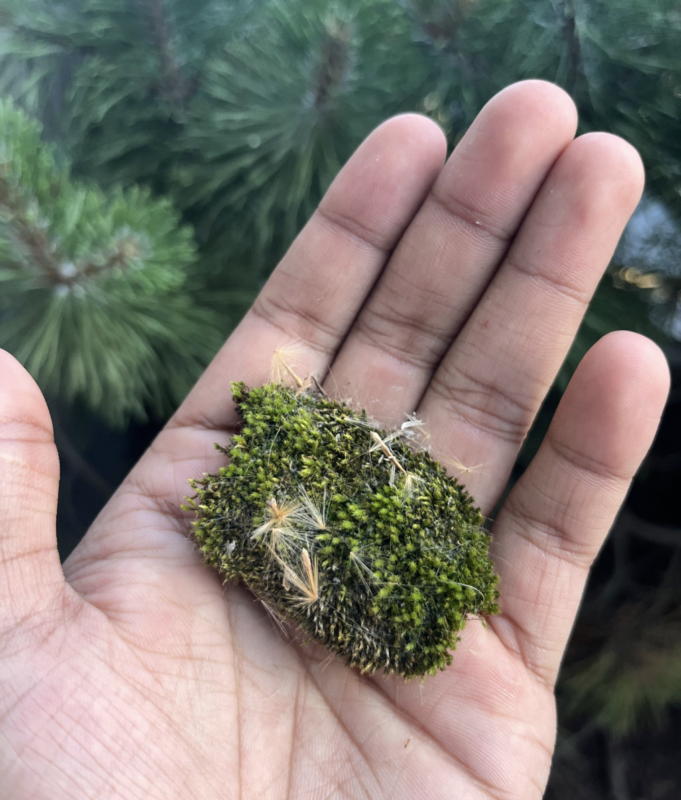
Lemon Lichen (Candelaria concolor): I found this lichen clinging to the surface of a tree along the trail. It is easily identifiable by its bright yellow-green color and small, granular structure, reminiscent of scattered lemon zest.
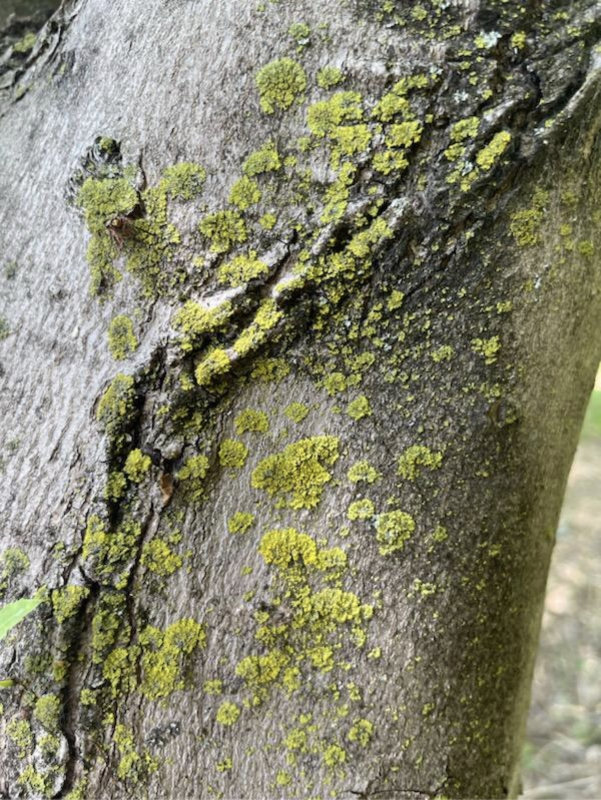
Yellow Sunburst Lichen (Xanthoria parietina): This lichen was spotted on the bark of a maple tree. Its striking yellow-orange hue and leaf-like structure make it a notable presence. Its surface was dotted with tiny cup-like apothecia, indicating a healthy and mature specimen.
